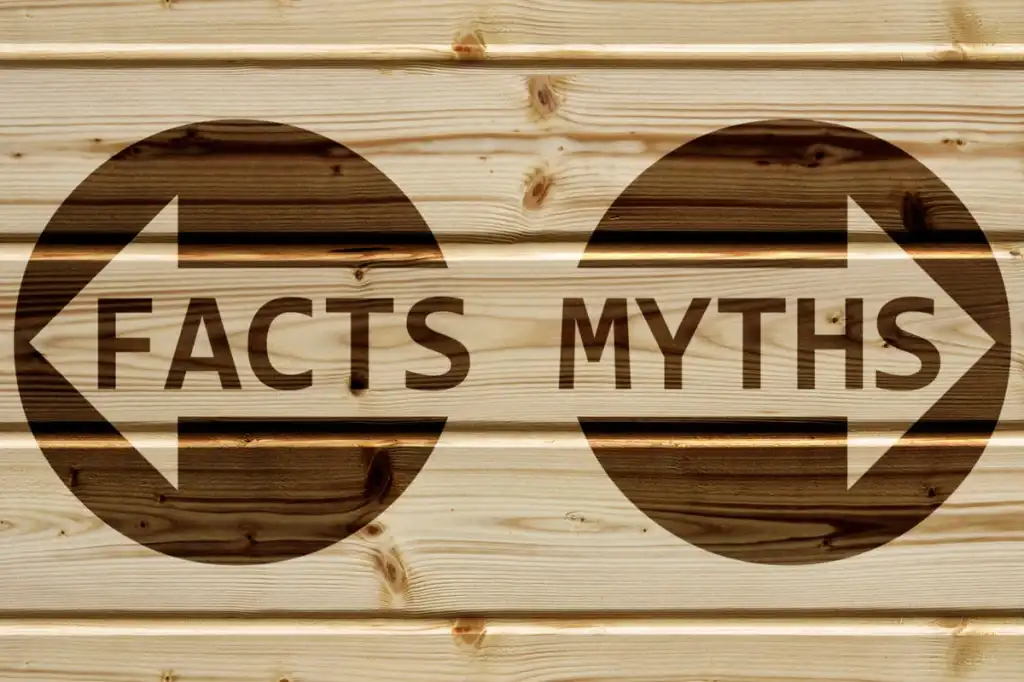Common Myths about Plywood and the Truth Behind Them: Plywood is a versatile material used in construction and carpentry and like any other material it has myths and misconceptions. Having identified the importance of plywood, what are some of its myths, and the facts about it?

In this article, we will discuss 6 Common Myths about Plywood and the Truth Behind Them which will further help you get a more accurate understanding of plywood properties, advantages, and versatility.
Myth 1: Plywood is Inferior to Solid Wood
One of the most Common Plywood Misconceptions and Myths is that plywood is naturally inferior to solid wood. This misconception arises from the belief that anything engineered must be of lower quality than a natural product.
Truth: But plywood is made in different ways and can have some advantages over solid wood. It is composed of layers or sheets that are stuck together with a grain direction which alternates between them. This means that compared to solid wood, plywood does not have as much potential for warping, shrinking, and swelling.
Besides, high-quality plywood may be just as strong and durable as a piece of solid timber. It is also very uniform and easy in handling thus suitable for many uses.
Myth 2: Plywood can get delaminated easily
Delamination in terms of the splitting up of the layers of plywood is one of its main disadvantages. This most Common Myths About Wood comes from individuals who had met with cheap plywoods or misused them.
Truth: Good quality plywoods that are manufactured under conditions that are controlled do not suffer from delamination during production. The glues used to bond these veneers are extremely strong and resistant to water so that even in normal condition the plies do not separate.
Myth 3: Plywood is Only for Rough Construction
Similarly, plywood is one of the materials that has been thought to be for rough construction or subfloors and roofs only as it cannot be used in finishing or furniture making.
Truth: There are different grades of plywood that have been made for specific purposes. High-quality plywood, also known as cabinet-grade or furniture-grade ply wood, has a uniform face with an attractive surface suitable for visible applications.
It is popular among cabinetry works, furniture making and interior designing due to its beauty and strength. Also, plywood can be veneered with exotic woods or finished differently to enhance its appearance making it a versatile material in both structural and decorative uses.
Myth 4: Plywood is Not Eco-Friendly
One common myth about plywood is that it is not environmentally friendly since it involves the cutting down of trees.
Truth: When sourced from sustainably managed forests, plywood can be environmentally friendly. The production of plywood employs the entire log including parts which might otherwise be discarded in the solid wood processing, thus minimizing wastage associated with this process.
Moreover, many companies producing plywoods follow various environmental standards and certifications such as Forest Stewardship Council (FSC) certification through which responsible forest management practices are ensured of forest management practices. Moreover, plywood can often be made from fast-growing species, which are more sustainable than slow-growing hardwoods.
Myth 5: All Plywood is the Same
A common misconception is that all plywood is created equal, leading to the assumption that any plywood can be used for any purpose.
Truth: These Common Myths about Plywood and the Truth Behind Them is that Plywood varies significantly in quality, thickness, and type. There are different grades of plywood that are designed for specific uses.
Marine plywood is one example which can withstand moisture hence suitable for boat building and other high moisture environments while interior plywood is meant for dry indoor applications.
It is important to know the differences and select the right type of plywood for your project to ensure optimal performance and longevity.
Myth 6: Plywood is Too Expensive
Many people think that plywood is too costly especially when considering its high-quality grades.
Truth: On the other hand, expensive high-grade plywood can be seen as a cost-effective solution, if all advantages it offers are taken into account. Consequently, using this material instead of its counterparts; will bring down costs in other sections related to construction or manufacturing.
For instance, its dimensional stability reduces labour costs that come with warping as well as installation adjustments. Moreover, with regards to material efficiency and reduced waste, constant quality checks combined with bigger panel sizes have made possible by consistently better products like this one.
Conclusion
There are several myths associated with plywood, and these myths significantly affect most customers. The kind of negative illusions described above does not disappear and is witnessed all the time. Still, after reading the article related to Common Myths about Plywood and the Truth Behind Them, we expect that you will be able to liberate from these myths as well.


